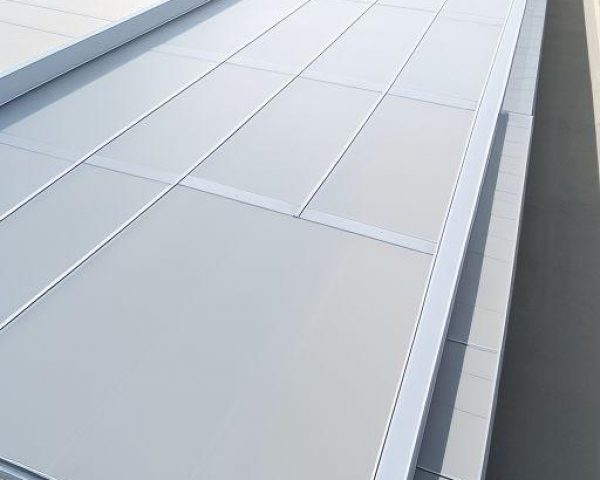Seasonal Savings: The Best Time of Year to Replace Your Roof on a Budget
When it comes to maintaining your home, few projects are as vital—or as costly—as replacing your roof. Whether you're dealing with leaks, curling shingles, or simply the wear and tear of age, making the decision to replace your roof is significant. But did you know that timing can significantly affect how much you spend? In this comprehensive guide, we’ll explore Seasonal Savings: The Best Time of Year to Replace Your Roof on a Budget, ensuring you’re armed with the knowledge to make informed decisions.
Understanding Roofing Replacement
What is Roofing Replacement?
Roofing replacement involves removing the old roofing material and installing new materials. This process ensures that your home remains protected from the elements and maintains its aesthetic appeal.


Why is Timing Important?
Timing can impact both cost and quality when it comes to roofing replacements. Different seasons offer unique advantages and disadvantages for homeowners looking to replace their roofs.
Seasonal Savings: The Best Time of Year to Replace Your Roof on a Budget
When considering a roof replacement, understanding the seasons’ dynamics can lead you to substantial savings. Here’s how each season measures up:
Spring Roofing Replacement
Advantages of Spring
- Moderate Weather: Spring often offers mild temperatures, making it ideal for roofing work.
- Availability of Contractors: Many contractors are more available in spring after winter slowdowns.
Disadvantages of Spring
- Higher Demand: As many homeowners begin projects in spring, prices may increase due to demand.
Summer Roofing Replacement
Advantages of Summer
- Optimal Installation Conditions: Dry weather allows for quick installations.
- Longer Days: More daylight means longer working hours for contractors.
Disadvantages of Summer
- Heat Stress: High temperatures can create uncomfortable conditions for workers.
- Peak Pricing: This is often when prices are at their highest due to demand.
Fall Roofing Replacement
Advantages of Fall
- Ideal Weather Conditions: The cooler temperatures can be perfect for roof installation.
- End-of-Year Discounts: Many contractors lower prices towards the end of the season to book jobs before winter.
Disadvantages of Fall
- Potential for Rain: Increased moisture can delay projects.
Winter Roofing Replacement
Advantages of Winter
- Lowest Prices: Since fewer people are looking to replace roofs in winter, you’ll often find the best deals.
Disadvantages of Winter
- Weather Delays: Snow and ice can halt work altogether.
- Installation Challenges: Cold weather can complicate certain types of roofing materials.
Comparative Analysis Table
| Season | Advantages | Disadvantages | |--------|------------|---------------| | Spring | Mild weather, availability | Higher demand, potential rain | | Summer | Optimal conditions | Peak pricing, heat stress | | Fall | Ideal weather, discounts | Rain delays | | Winter | Lowest prices | Weather delays |
Factors Influencing Your Decision
1. Budget Considerations
The biggest factor for most homeowners is budget. Not only should you consider material costs but also labor rates which vary by season.
2. Material Selection
Some materials perform better in specific seasons. For instance:
- Asphalt shingles thrive in moderate temperatures.
- Metal roofs have specific installation requirements during colder months.
3. Local Climate
Your geographical location plays a pivotal role in determining the best season for roof replacement. Warmer climates might have different optimal periods compared to regions with harsh winters.
Finding Roofing Replacement Near Me
Searching online for "roofing replacement near me" will yield numerous options. However, it's crucial not just to look at proximity but also:
FAQs About Roof Replacement
1. How do I know if I need a roof replacement?
If you notice missing shingles, leaks, or significant granule loss from asphalt shingles, it might be time for a replacement.
2. What type of roofing material should I choose?
This depends on your budget, climate considerations, and aesthetic preferences—common materials include asphalt shingles, metal roofing, and tile roofs.
3. Can I replace my roof myself?
While some DIY enthusiasts may attempt this task, hiring professionals is recommended due to safety concerns and expertise required.
4. How long does a roof replacement take?
Typically between one day to several days depending on size and complexity; however, weather conditions may affect timelines.

5. Is financing available for roof replacements?
Many contractors offer financing options or payment plans; inquire during estimates about what’s available.
6. Are there any warranties associated with new roofs?
Yes! Most reputable contractors provide warranties covering both labor and materials—be sure to ask about these during discussions!
Conclusion
In conclusion, timing your roof replacement wisely can lead not only to significant savings but also ensure that your investment stands the test of time against nature's elements. Understanding seasonal dynamics gives you an edge in planning your project effectively while maximizing value—a win-win situation! Always remember that searching “roofing replacement near me” will give you local options tailored to your needs and budget constraints.
By following this guide on seasonal savings and strategic planning around when you decide to tackle this critical home improvement project, you're well on your way toward achieving a sturdy storm damage roof repair in Lavon Texas new roof without breaking the bank!